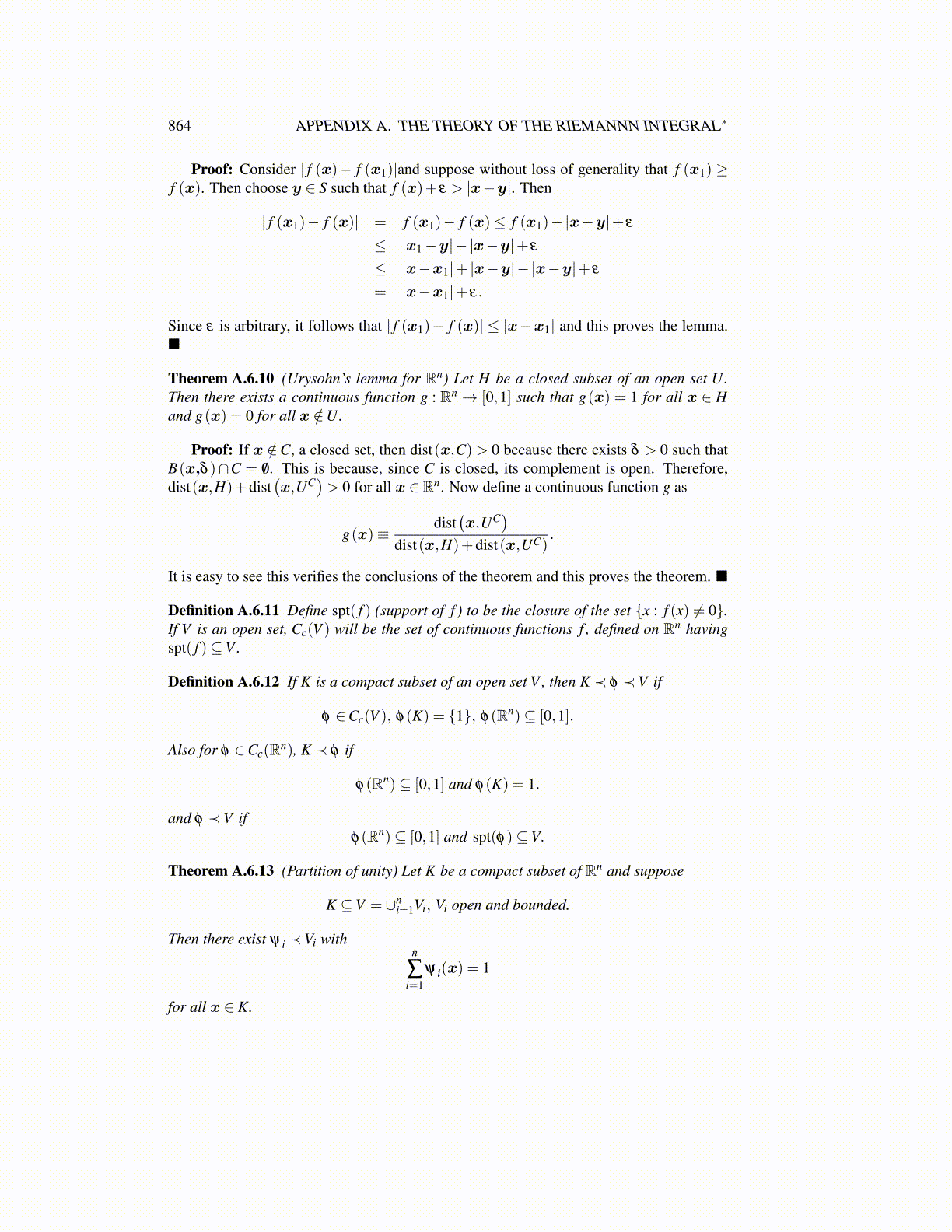
864 APPENDIX A. THE THEORY OF THE RIEMANNN INTEGRAL∗
Proof: Consider | f (x)− f (x1)|and suppose without loss of generality that f (x1) ≥f (x). Then choose y ∈ S such that f (x)+ ε > |x−y|. Then
| f (x1)− f (x)| = f (x1)− f (x)≤ f (x1)−|x−y|+ ε
≤ |x1−y|− |x−y|+ ε
≤ |x−x1|+ |x−y|− |x−y|+ ε
= |x−x1|+ ε.
Since ε is arbitrary, it follows that | f (x1)− f (x)| ≤ |x−x1| and this proves the lemma.■
Theorem A.6.10 (Urysohn’s lemma for Rn) Let H be a closed subset of an open set U.Then there exists a continuous function g : Rn → [0,1] such that g(x) = 1 for all x ∈ Hand g(x) = 0 for all x /∈U.
Proof: If x /∈C, a closed set, then dist(x,C)> 0 because there exists δ > 0 such thatB(x,δ )∩C = /0. This is because, since C is closed, its complement is open. Therefore,dist(x,H)+dist
(x,UC
)> 0 for all x ∈ Rn. Now define a continuous function g as
g(x)≡dist(x,UC
)dist(x,H)+dist(x,UC)
.
It is easy to see this verifies the conclusions of the theorem and this proves the theorem. ■
Definition A.6.11 Define spt( f ) (support of f ) to be the closure of the set {x : f (x) ̸= 0}.If V is an open set, Cc(V ) will be the set of continuous functions f , defined on Rn havingspt( f )⊆V .
Definition A.6.12 If K is a compact subset of an open set V , then K ≺ φ ≺V if
φ ∈Cc(V ), φ(K) = {1}, φ(Rn)⊆ [0,1].
Also for φ ∈Cc(Rn), K ≺ φ if
φ(Rn)⊆ [0,1] and φ(K) = 1.
and φ ≺V ifφ(Rn)⊆ [0,1] and spt(φ)⊆V.
Theorem A.6.13 (Partition of unity) Let K be a compact subset of Rn and suppose
K ⊆V = ∪ni=1Vi, Vi open and bounded.
Then there exist ψ i ≺Vi withn
∑i=1
ψ i(x) = 1
for all x ∈ K.